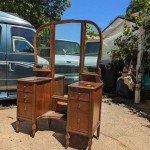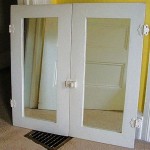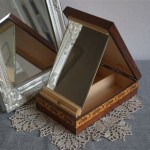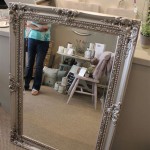Antiqued Glass Mirrors
Antiqued glass mirrors offer a unique blend of functionality and decorative appeal. Their distinctive weathered appearance adds character and depth to any interior, evoking a sense of history and timeless elegance. Understanding the creation process, the different types available, and their care and maintenance can help individuals select the perfect antiqued mirror for their needs.
The antique look of these mirrors is achieved through various techniques that mimic the natural aging process of glass. These methods can involve applying chemical treatments, back-painting with specific tints, or utilizing specialized coating processes. The resulting effect is a surface with subtle imperfections, variations in reflectivity, and a softer, more diffused reflection compared to modern mirrors.
One common technique is the application of silvering solutions containing chemicals that promote oxidation. This process creates a speckled, mottled appearance, often with darker edges and corners, resembling the look of aged silver. The degree of antiquing can be controlled by adjusting the chemical composition and application time, allowing for a range from subtly aged to heavily distressed effects.
Another method involves applying a layer of tinted paint or varnish to the back of the mirror. This technique imparts a specific color cast to the reflection and also creates a more aged appearance. Common tints include shades of gray, brown, and amber, which contribute to a vintage aesthetic. The paint layer can also be intentionally distressed or crackled to further enhance the antique effect.
Beyond chemical treatments and back-painting, some manufacturers use specialized coating processes to create an antiqued appearance. These coatings can mimic the texture and imperfections of old glass, adding depth and visual interest. The use of these advanced techniques allows for greater control over the final product, enabling the creation of highly specific and customized antique effects.
Several distinct types of antiqued glass mirrors are available, each offering a unique aesthetic. These variations depend on the specific antiquing process employed and the desired final look. Some popular types include mercury glass mirrors, which feature a silvery, slightly mottled surface, and smoked glass mirrors, distinguished by their darker, more opaque reflections.
Flemish glass mirrors are another popular choice, characterized by their intentionally distorted reflections and bubbled texture. This effect is achieved by incorporating air bubbles into the glass during manufacturing, creating a uniquely antique appearance. These mirrors often feature a more pronounced aged look, with significant variations in reflectivity across the surface.
Distressed mirrors represent another type of antiqued mirror, often featuring chipped edges, simulated cracks, and other deliberate imperfections. These mirrors offer a more rustic and weathered appearance, suitable for spaces with a vintage or farmhouse aesthetic. The level of distressing can vary significantly, from subtle chips and scratches to more prominent signs of wear and tear.
Choosing the right antiqued mirror involves considering various factors, including the desired aesthetic, the surrounding décor, and the intended function. For instance, a heavily antiqued mirror might be ideal for a traditional setting, while a subtly aged mirror might be more suitable for a contemporary space.
The size and shape of the mirror also play a crucial role in the overall effect. Large, ornate antiqued mirrors can serve as statement pieces in a room, while smaller, simpler mirrors can be used to add subtle touches of vintage charm. Considering the existing color palette and the overall style of the room is essential for ensuring a cohesive and harmonious design.
Proper care and maintenance are essential for preserving the beauty and longevity of antiqued glass mirrors. Regular dusting with a soft, dry cloth is recommended to remove surface dust and prevent scratches. Avoid using harsh cleaning chemicals or abrasive materials, as these can damage the delicate antique finish.
For more stubborn dirt or smudges, a slightly damp cloth can be used, followed by immediate drying with a soft cloth. It's crucial to avoid allowing moisture to accumulate on the mirror surface, as this can lead to water spots or damage to the backing. Proper handling and careful maintenance are essential for ensuring that these unique mirrors retain their beauty and character for years to come.
When hanging an antiqued mirror, consider its weight and fragility. Using appropriate hanging hardware and ensuring secure mounting are crucial for preventing damage. It is also advisable to avoid exposing the mirror to direct sunlight or extreme temperature fluctuations, as these factors can contribute to fading or deterioration of the antique finish.

Glass Distressed Mirror Antique Usage Home

Antique Glass Mirror Shape Rectangular
Markle Antique Glass Panel Mirror

Modern Luxury Hotel Wall Decorative Small Round Frame Gold Antique Mirror China Framed Explosion Proof Silver Made In Com

Antique Mirror Glass Safety Replacements

Buy Antique Mirror Trumeau Style Wall Frameless In

Buy Glass Wood Vintage Mirror For Home Decor And Living Space Ikiru

Buy Framed Antiqued Mirror Square With Hand Made In

Antique Glass Mirror Frame Size 18 X 24 Inch 16 20 At Rs 1 000 Piece In Delhi

Antique Mirrors Capital Glass








